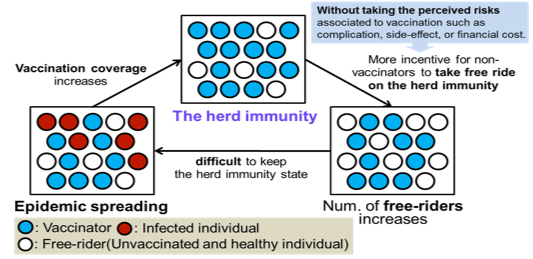Urban and Architectual Environment Engineering/ Green-Asia Environmental Studies
Three main research areas
In recent years, the rapid urbanization characterized by the population increase of urban habitats, the sprawl of densely populated areas, and intensive activity of industry, and commercial sectors has become obvious all over the world.
Such a recent tremendous development of cities is the inevitable consequence of the economic growth of the cities, and itself encourages the further development of economics and industry by attracting people and money. However, such a rapid urbanization has brought us various environmental issues which are possible to smear the health of comfort of urban habitats.
Under these circumstances, Laboratory of Urban and Architectural Environment has been active aiming for the realization of sustainability and comfort of urban environment consisting of numerous buildings and facilities, which underpins people's various activity.
It is in general difficult to reconcile the sustainability with the comfort, thus, challenges for the aim should be supported by wide academic knowledge such as environmental science and engineering, as well as economics and social science.
Therefore, the research activities of our laboratory widely spread in three main research areas shown in the following schematic figure, 1) urban climatology & wind engineering, 2) urban/ building environmental engineering & building physics, and 3) game theory & complex science.
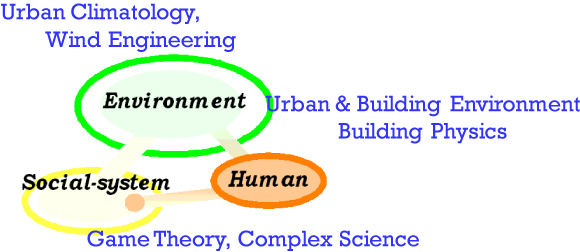
Academic Staff and Students
Professor Jun TANIMOTO, associate prof. Aya HAGISHIMA, and assistant professor Naoki IKEGAYA are working for the research and education of this laboratory through their cooperative and harmonized team work, and up to Apr 2014, there are 3 undergraduate students from school of engineering, KU, 5 master course graduate students, and 8 Ph. D students (4 Japanese, 3 Malaysian, and 4 Korean) and one visiting student from Malaysia in our lab.
Since the three main research fields of our lab are categorized in relatively new and interdisciplinary fields, most graduate students started his/her research in a new academic field other than their undergraduate study after joining in our lab. However, fundamental knowledge of fluid dynamics, thermodynamics, and heat transfer engineering is a part of essential base of urban climatology, wind engineering, urban & building environment, and building physics; thus, it is not difficult for students graduated from ordinary departments in engineering and science to adjust the environment of our lab.
In contrast, the fields of game theory and complex sciences are indeed new and hot areas where numerous researchers of physics, mathematics, economics, evolutionary biology and engineering have joined and actively worked, thus, young students are possible to challenge and become comparable to senior researchers regardless of their original specialty as far as he/she has a challenging spirit, intellectual curiosity and knowledge of basic engineering and sciences.
Our Researches in Urban Climatology and Wind Engineering
Keywords: Atmospheric Boundary Layer, Computational Fluid Dynamics (CFD), Laser Doppler Velocimetry (LDV), Particle Image Velocimetry (PIV), Rough Wall Turbulence Flow, Urban Heat Island Phenomena, Wind Tunnel Experiment
It has become known that the climate in urban areas is different from surrounding rural or suburban areas for recent years. Urban Heat Island phenomena (UHI), the phenomenon that the air temperature in urban areas is higher than that of surroundings, is one of the typical examples. To realize safer and more comfort life of urban habitats, our laboratory has made challenges in the following aspects and research themes.
1. Aims
✔️ Predict accurately the urban climate (Urban Heat Island phenomena, airflow,
energy balance and pollutant dispersion in urban street canyons )
✔️ Understand turbulent nature over urban surfaces consist of building arrays
2. Methodologies
✔️ Wind tunnel experiments
✔️ Numerical simulation (computational fluid dynamics CFD)
✔️ Outdoor field measurements
The followings are parts of our ongoing research projects.
- Wind tunnel experiments on the relation between urban geometry and transport phenomena of momentum, heat, and scalar of urban areas
- Measurements of urban canopy flow by using Particle Image Velocimetry (PIV) method
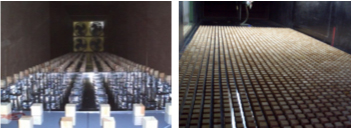
✔️ Numerical simulation of the airflow over block arrays

Our Research themes of Urban & Building environment and building physics
Keywords: Building Energy Simulation (BES), Computational Fluid Dynamics (CFD), Low Emission Building, Passive Design of urban spaces and architecture, Sustainable Building,
✔️ Monte-Carlo Simulation of utility demand of residence based on Building Energy Simulation
(BES) coupled with a statistical model of occupant behavior schedule
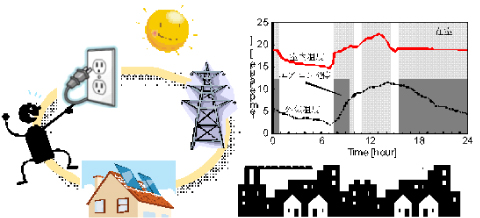
✔️ Research on sustainable design for houses in tropical regions based on BES and CFD.
✔️ Numerical Simulation of natural ventilation of Malaysian terrace houses
✔️ Effects of urban green parks, roadside trees, rivers, and airflow on urban microclimate
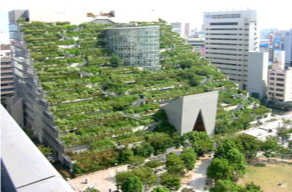
Our Research for modeling of Human–Environment–Social System built on Complex Science
Keywords: Cellular Automaton, Complex Science, Evolutionary Game Theory, Multi-Agent Simulation, Traffic Flow Simulation
The term "Environment" is always related to our individual life style and the social system that is a huge mass congregated by individual human beings. So then, the scope to grasp not only the environment but also human entity and society at the same time has become very important. In general, trying to deal with human and social mass inevitably entails with some sort of ambiguous things or fuzziness, since a human being is so deep and complicated that you can't analyze quantitatively. That's one of the reasons why the sociology keeps away from science and engineering approaches. In that sense, several new concepts coming from the latest mathematical science or OR (Operations Research) including complexity theory, information theory, system dynamics, game theory and other various approaches can provide powerful solutions to crack the hard nuts.
One important key is that the three elements. Human, Environment and Social System should be treated in a mutually relational and transitional way. Conventional ideas, for instance Environment is considered as a boundary condition or an input statically given for Human System, don't make any sense in a way. Therefore, the idea of Human-Environment-Social System that means a simultaneous modeling becomes important. Now, we are concerned in several specific topics as follows;
✔️ Traffic flow analysis based on cellular automata and evolutionary game theory

✔️ Analysis of evolution of cooperation in a society based on Multi Agent Simulation

✔️ Modelling of dynamics of epidemic spreading and vaccination
